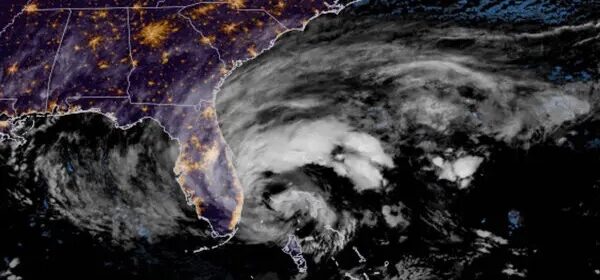Hurricanes and Health

JOANNA ZHU – Recently, Hurricane Nicole, the first US hurricane to hit in November in 37 years, killed at least five people and caused severe damage to Florida’s eastern coastline properties. Powerful winds and flooding caused by storm surges resulted in the collapse of beachfront homes and power lines and partial structural damage to other buildings. At some point, more than 300,000 people were left without power and around 200 residents were housed in county shelters. Fortunately, the hurricane weakened as it moved across Georgia towards the Carolinas and Virginia, but it still brought heavy rain and wind as well as threats of isolated tornadoes to the region.
Looking at the damage, it’s understandable that the impact of hurricanes are most often described from the standpoint of weather changes and environmental destruction. However, the effects of hurricanes on health, which are overlooked in comparison, are just as prevalent and important.
The immediate effects of a hurricane’s rampage on people’s health are numerous. Severe injuries and trauma can occur from collapsing structures and trees, and the sudden flooding caused by storm surges can result in drowning. Electrocution is also a common occurrence, especially in areas with toppled power lines and flooding.
The more subtle and prolonged effects of a hurricane include the exacerbation of pre-existing health conditions, such as diabetes, and the development of respiratory illnesses and mental disorders. In a study conducted in 2010, diabetic patients in New Orleans were observed to have significant differences in their conditions before and after Hurricane Katrina, indicated by their blood pressure, lipids, and hemoglobin A1C values. This resulted in increased recovery time back to pre-disaster levels and higher risks of mortality for these patients. To mitigate these effects during future hurricanes, appropriate immediate care should be provided to hurricane victims with pre-existing conditions. The sooner they are treated, the better it will be for their health in the long run.
Regarding the development of respiratory illnesses after a hurricane, a 2012 study examining the health of restoration workers in New Orleans post-Hurricane Katrina reported observing symptoms of coughing, sinus congestion, and throat irritation. A small percentage of workers even developed pneumonia and asthma. These findings are associated with the increase of allergens such as mold and debris uplifted by the hurricane. Even when the initial major threats of a hurricane have passed, it’s possible for the smaller things, the unseeable, to still impact the health of communities.
Along with the physical effects on the body, there are also mental tolls. Among the most common mental disorders related to the impact of hurricanes are PTSD, anxiety, and depression. It was found that the symptoms for each of these disorders were elevated after a hurricane occurred. Factors that influenced the rise in PTSD symptoms include witnessing the death or injury of a loved one, experiencing violence, and fearing death. These mental effects are long-lasting and can persist for months, such as in the case of some New Orleans residents post-Katrina, or even years if the symptoms are severe.
Knowing all of this, what can a community do to best prepare themselves for a hurricane and the recovery process?
According to the American Red Cross, some things to do before a hurricane include making a plan to evacuate (know where to go and how to get there), gathering emergency food, water, and medicine supplies, and learning to use a generator safely. Outside items such as trash bins should be secured so that they won’t be blown away by high winds, resulting in lower chances of it hitting someone and damaging property. A tree close to the home can be trimmed or cut down to eliminate the threat of it falling down and causing destruction or injury. After a hurricane, it’s imperative to avoid fallen power lines and floodwaters, which are often contaminated with sewage, bacteria, and chemicals. When cleaning up, wearing protective equipment like boots, gloves, and goggles is recommended.
Although the negative impacts of hurricanes on health may not be fully preventable, being prepared as a community to mitigate them can ultimately make a large difference when it comes down to it.
Copy Editor – Annie Patel
Photography Source – https://www.nytimes.com/2022/11/10/us/tropical-storm-nicole-forecast.html
